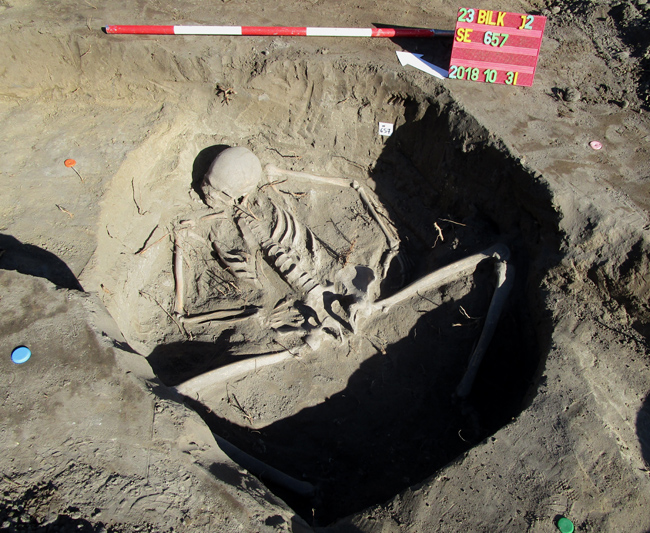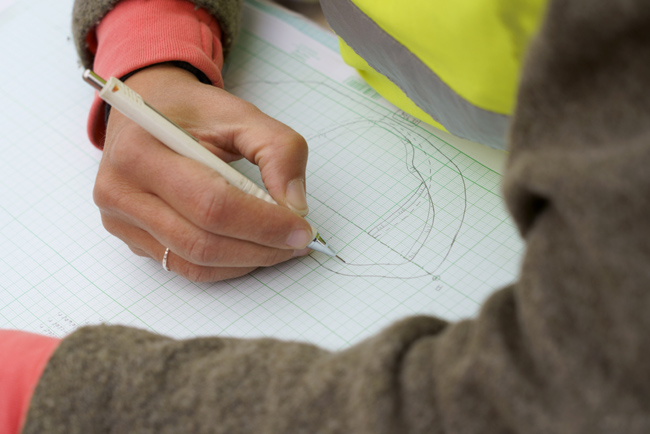Budapest History Museum members of staff have excavated a section of a Sarmatian settlement inhabited between the 2nd and 4th centuries near Route 51; a report by the excavation’s lead archaeologist Anita Korom.

Prior to the construction of two further warehouses at the BILK Logistics Centre, Budapest History Museum members of staff have unearthed a section of a large, 2nd-4th century Sarmatian settlement with a high concentration of archaeological features in the outskirts of Soroksár. In the 1.7 hectares explored, over 800 features have been found, a large part of which belonged to the economic-storage area of the settlement. During the dig, we were only able to locate the southern edge of the site. Water was drained to the marshy, lower-lying area by parallel ditch systems.

At the centre of the site ten relatively deep and large houses with plastered bottoms stood parallel to each other. The houses were rectangular, showing traces of three postholes in their long axis for posts holding the roof. None of the houses had ovens. The only house with an indoors oven was a smaller, angular building with a plastered bottom that lay among the storage pits, further away from the other houses.
In a wide strip around the houses there were hundreds of characteristically Sarmatian, so-called beehive-shaped pits with narrow mouths and of differing depths. Many of the pits intersected; these, however, were not in simultaneous use. Several decades after the old ones had been filled and abandoned, new storage pits were dug, intersecting the old. Features used initially for storage later served as refuse pits containing domestic waste, broken pottery, animal bones and burnt building debris. The depth of the pits varied between 1-1.8 m. We often detected very ashy layers in the filling. We found large amounts of slag in the eastern half of the site. Without further scientific analysis, we cannot tell whether it consists of glass-gall or burnt daub.


We unearthed three structures for preserving food by smoking around the site. Their funnels were only slightly burnt, indicating that they were not in use for a long time. We found one of these structures in the lower-lying southern edge of the site next to two large 3m-wide and 2.5m-deep pits. Given the clayey subsoil, the deep pits were probably used for storing water.
We did not find the connected burial site, but discovered human skeletons in three pits within the settlement. We do not know why they were not buried in the cemetery according to contemporary customs. We found two bronze bracelets on a skeleton unearthed by the wall of one of the deep pits.


Fragments of wheel-thrown ceramics with grainy tempering dominate the record of finds. Relatively few pieces were hand-built. We could only locate the southern and western edge of the Sarmatian settlement, inhabited for a long time between the 2nd and 4th century. The settlement certainly extends further north and east, towards Route 51.
The article and the photographs originally appeared on regeszet.btm.hu (in Hungarian).
Click here to read the previous entries of the Aquincum Museum’s blog.


